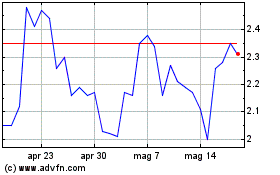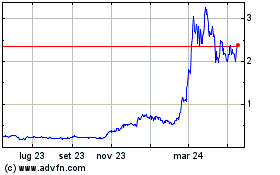

AI is transforming how people interact with financial markets,
and cryptocurrency trading is no exception. With tools like
OpenAI’s Custom GPTs, it is now possible for beginners and
enthusiasts to create intelligent trading bots
capable of analyzing data, generating signals and even executing
trades.
This guide analyzes the fundamentals of building a
beginner-friendly AI crypto trading bot using Custom GPTs. It
covers setup, strategy design, coding, testing and important
considerations for safety and success.
What is a custom GPT?
A custom GPT (generative pretrained transformer) is a
personalized version of OpenAI’s
ChatGPT. It can be trained to follow specific instructions,
work with uploaded documents and assist with niche tasks, including
crypto trading bot development.
These models can help automate tedious processes, generate and
troubleshoot code, analyze technical indicators and even
interpret crypto
news or market sentiment, making them ideal companions for
building algorithmic trading bots.
What you’ll need to get started
Before creating a trading bot, the following
components are necessary:
-
OpenAI ChatGPT Plus subscription (for access to
GPT-4 and
Custom GPTs).
-
A crypto exchange account that offers API access (e.g.,
Coinbase,
Binance, Kraken).
-
Basic knowledge of Python (or
willingness to learn).
-
A paper trading environment to safely test strategies.
-
Optional: A VPS or cloud server to run the bot continuously.
Did you know? Python’s creator,
Guido van Rossum, named the language after Monty Python’s Flying
Circus, aiming for something fun and approachable.
Step-by-step guide to building an AI trading bot with custom
GPTs
Whether you’re looking to generate trade signals, interpret news
sentiment or automate strategy logic, the below step-by-step
approach helps you learn the basics of combining
AI with crypto
trading.
With sample Python scripts and output examples, you'll see how
to connect a custom GPT to a trading system, generate trade signals
and automate decisions using real-time market data.
Step 1: Define a simple trading strategy
Start by identifying a basic rule-based strategy that is easy to
automate. Examples include:
-
Buy when Bitcoin’s (BTC) daily price drops by more than
3%.
-
Sell when RSI (relative strength index) exceeds 70.
-
Enter a long position after a bullish moving average convergence
divergence (MACD) crossover.
-
Trade based on sentiment from recent crypto headlines.
Clear, rule-based logic is essential for creating effective code
and minimizing confusion for your Custom GPT.
Step 2: Create a custom GPT
To build a personalized GPT model:
-
Visit chat.openai.com
-
Navigate to Explore GPTs > Create
-
Name the model (e.g., “Crypto Trading Assistant”)
-
In the instructions section, define its role clearly. For
example:
“You are a Python developer specialized in crypto trading
bots.”
“You understand technical analysis and crypto APIs.”
“You help generate and debug trading bot code.”
Optional: Upload exchange API documentation or
trading strategy PDFs for additional context.
Step 3: Generate the trading bot code (with GPT’s help)
Use the custom GPT to help generate a Python script. For
example, type:
“Write a basic Python script that connects to Binance using
ccxt and buys BTC when RSI drops below 30. I am a beginner and
don’t understand code much so I need a simple and short script
please.”

The GPT can provide:
-
Code for connecting to the exchange via API.
-
Technical indicator calculations using libraries like ta or
TA-lib.
-
Trading signal logic.
-
Sample buy/sell execution commands.
Python libraries commonly used for such tasks are:
-
ccxt for multi-exchange API support.
-
pandas for market data manipulation.
-
ta or
TA-Lib for
technical analysis.
-
schedule or apscheduler for running timed tasks.
To begin, the user must install two Python libraries: ccxt for
accessing the Binance API, and ta (technical analysis) for
calculating the RSI. This can be done by running the following
command in a terminal:
pip install ccxt ta
Next, the user should replace the placeholder API key and secret
with their actual Binance API credentials. These can be generated
from a Binance account dashboard. The script uses a five-minute
candlestick chart to determine short-term RSI conditions.
Below is the full script:
========================================================================
import ccxt
import pandas as pd
import ta
# Your Binance API keys (use your own)
api_key = 'YOUR_API_KEY'
api_secret = 'YOUR_API_SECRET'
# Connect to Binance
exchange = ccxt.binance({
'apiKey': api_key,
'secret': api_secret,
'enableRateLimit': True,
})
# Get BTC/USDT 1h candles
bars = exchange.fetch_ohlcv('BTC/USDT', timeframe='1h',
limit=100)
df = pd.DataFrame(bars, columns=['timestamp', 'open', 'high',
'low', 'close', 'volume'])
# Calculate RSI
df['rsi'] = ta.momentum.RSIIndicator(df['close'],
window=14).rsi()
# Check latest RSI value
latest_rsi = df['rsi'].iloc[-1]
print(f"Latest RSI: {latest_rsi}")
# If RSI < 30, buy 0.001 BTC
if latest_rsi < 30:
order =
exchange.create_market_buy_order('BTC/USDT', 0.001)
print("Buy order placed:", order)
else:
print("RSI not low enough to buy.")
========================================================================
Please note that the above script is intended for illustration
purposes. It does not include risk management features, error
handling or safeguards against rapid trading. Beginners should test
this code in a simulated environment or on Binance’s testnet before
considering any use with real funds.
Also, the above code uses market orders, which execute
immediately at the current price and only run once. For continuous
trading, you’d put it in a loop or scheduler.
Images below show what the sample output would look like:


The sample output shows how the trading bot reacts to market
conditions using the RSI indicator. When the RSI drops below 30, as
seen with “Latest RSI: 27.46,” it indicates the market may be
oversold, prompting the bot to place a market buy order. The order
details confirm a successful trade with 0.001 BTC
purchased.
If the RSI is higher, such as “41.87,” the bot prints “RSI not
low enough to buy,” meaning no trade is made. This logic helps
automate entry decisions, but the script has limitations like no
sell condition, no continuous monitoring and no real-time risk
management features, as explained previously.
Step 4: Implement risk management
Risk control is a critical component of any automated
trading
strategy. Ensure your bot includes:
-
Stop-loss and
take-profit mechanisms.
-
Position size limits to avoid overexposure.
-
Rate-limiting or cooldown periods between trades.
-
Capital allocation controls, such as only risking 1–2% of total
capital per trade.
Prompt your GPT with instructions like:
“Add a stop-loss to the RSI trading bot at 5% below the
entry price.”
Step 5: Test in a paper trading environment
Never deploy untested bots with real capital. Most exchanges
offer testnets or sandbox environments where trades can be
simulated safely.
Alternatives include:
-
Running simulations on historical data (backtesting).
-
Logging “paper trades” to a file instead of executing real
trades.
-
Testing ensures that logic is sound, risk is controlled and the
bot performs as expected under various conditions.
Step 6: Deploy the bot for live trading (Optional)
Once the bot has passed paper trading tests:
-
Replace test API keys: First, replace your test
API keys with live API keys from your chosen exchange’s account.
These keys allow the bot to access your real trading account. To do
this, log in to exchange, go to the API management section and
create a new set of API keys. Copy the API key and secret into your
script. It is crucial to handle these keys securely and avoid
sharing them or including them in public code.
-
Set up secure API permissions (disable
withdrawals): Adjust the security settings for your API
keys. Make sure that only the permissions you need are enabled. For
example, enable only “spot and margin
trading” and disable permissions like “withdrawals” to reduce
the risk of unauthorized fund transfers. Exchanges like Binance
also allow you to limit API access to specific IP addresses, which
adds another layer of protection.
-
Host the bot on a cloud server: If you want the
bot to trade continuously without relying on your personal
computer, you’ll need to host it on a cloud server. This means
running the script on a virtual machine that stays online 24/7.
Services like Amazon Web Services (AWS), DigitalOcean or
PythonAnywhere provide this functionality. Among these,
PythonAnywhere is often the easiest to set up for beginners, as it
supports running Python scripts directly in a web interface.
Still, always start small and monitor the bot regularly.
Mistakes or market changes can result in losses, so careful setup
and ongoing supervision are essential.
Did you know? Exposed API keys are
a top cause of crypto theft. Always store them in environment
variables — not inside your code.
Ready-made bot templates (starter logic)
The templates below are basic strategy ideas that beginners can
easily understand. They show the core logic behind when a bot
should buy, like “buy when RSI is below 30.”
Even if you’re new to coding, you can take these simple ideas
and ask your Custom GPT to turn them into full, working Python
scripts. GPT can help you write, explain and improve the code, so
you don’t need to be a developer to get started.
In addition, here is a simple checklist for building and testing
a crypto trading bot using the RSI strategy:

Just choose your trading strategy, describe what you want, and
let GPT do the heavy lifting, including backtesting, live trading
or multi-coin support.
-
RSI strategy bot (buy Low RSI)
Logic: Buy BTC when RSI drops below 30
(oversold).
if rsi < 30:
place_buy_order()
2. MACD crossover bot
Logic: Buy when MACD line crosses above signal
line.
if macd > signal and previous_macd < previous_signal:
place_buy_order()
3. News sentiment bot
Logic: Use AI (Custom GPT) to scan headlines
for bullish/bearish sentiment.
if “bullish” in sentiment_analysis(latest_headlines):
place_buy_order()
Used for: Reacting to market-moving news or
tweets.
Tools: News APIs + GPT sentiment
classifier.
Risks concerning AI-powered trading bots
While trading bots can be powerful tools,
they also come
with serious risks:
-
Market volatility: Sudden price swings can lead
to unexpected losses.
-
API errors or rate limits: Improper handling
can cause the bot to miss trades or place incorrect orders.
-
Bugs in code: A single logic error can result
in repeated losses or account liquidation.
-
Security vulnerabilities: Storing API keys
insecurely can expose your funds.
-
Overfitting: Bots tuned to perform well in
backtests may fail in live conditions.
Always start with small amounts, use strong risk management and
continuously monitor bot behavior. While AI can offer powerful
support, it’s crucial to respect the risks involved. A successful
trading bot combines intelligent strategy, responsible execution
and ongoing learning.
Build slowly, test carefully and use your Custom GPT not just as
a tool — but also as a mentor.
...
Continue reading How to build an AI crypto trading
bot with custom GPTs
The post
How to build an AI crypto trading bot with custom
GPTs appeared first on
CoinTelegraph.
Grafico Azioni Fetch (COIN:FETUSD)
Storico
Da Mar 2025 a Apr 2025

Grafico Azioni Fetch (COIN:FETUSD)
Storico
Da Apr 2024 a Apr 2025
